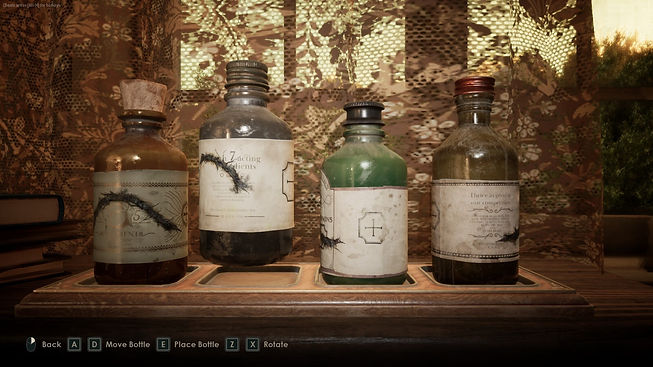Alone in the Dark weaves a chilling tapestry of psychological horror and Southern Gothic charm, reimagining the iconic game that set the benchmark for the genre. We invite you to join us on a journey into madness, where each encounter could be your last. With each step you take closer to unravelling Derceto's mystery, the eyes that watch from the darkness grow hungrier. Every bullet means the difference between survival and an unthinkable end. The next door you unlock could lead to a nightmarish realm offering nothing but slashing claws, grasping tentacles, and frayed sanity. Journey to interbellum Louisiana, where an era of decadence hides a darker tale - of escape from past traumas and an intolerant society, into the waiting grasp of something darker, something that has patiently lurked for impossible eons. This is Alone in the Dark as you've never seen it - a skillfully-woven narrative of Southern Gothic elegance and eldritch madness that pays homage to its legendary origins while taking the next step forward in survival horror storytelling.




CONTRIBUTION

PUZZLE MECHANICS
-
Design and implement base mechanics for selection based puzzles.
-
Design and implement different puzzles in accordance to pre-determined requirements.
-
Make sure puzzles are readable for a variety of players.
-
Synching with affected stakeholders and make sure the puzzles are up to spec.
-
Make sure the puzzles feels good to interact with.
ANOMALIES
-
Brain-storm how the anomaly-events should work and be experienced.
-
Design and prototype the anomaly-events based on pre-determined requirements.
-
Create specifications of what is needed from affected stakeholders to finalize the events.
-
Make sure all anomalies hit the target user experience, and intended quality.


CONTEXTUAL TRAVERSALS
-
Design and implement base systems for traversals based on pre-determined requirements.
-
Work closely with animation & animation tech to set up the traversals properly.
-
Set up animation-based movement for a smoother experience.
-
Make sure traversals uphold intended quality and feels good to interact with.
GENERAL WORK
-
Help other departments with gameplay specific implementations.
-
Find issues with optimization using profiling tools.
-
Actively give feedback of the game.
-
Guide and help junior designers with their work.
-
Create technical documentation and design documents.

ROLE
Technical game designer
My role as a technical game designer has included working with both theoretical game design and gameplay implementation.
I've been working with different gameplay elements in the game, which has been needed to be designed based on specific requirements set up by the creative direction department. I've been mainly looking into how these requested features should work, how they should be created to fit the target experience and feel satisfying to interact with, if they are readable and if they are accessible to all players.
From there I've prototyped the requested features with unreal blueprints and C++ to test my design theses made in the design phase. If the feature was deemed as fitting, I could move on to implementing it properly and set up a list with requirements and what was needed from other departments. If it didn't fit, I iterated on the feature until I either made it fit, or raised the issue with the creative department.
My work has also included working with different departments to come up with new gameplay features during brain-storm sessions and set up design documents detailing everything that was needed with rough time estimates. This has then been discussed with the producer and creative department. If the feature has been greenlit, a task-force has been set up with key members from each affected department to create said features. I've managed some task-forces created this way.
CHALLENGES
The user experience
One of the more prominent challenges of this project has been to nail down the target user experience for each feature. Horror games have to work with the player's mind and figuring out what is experienced as scary can be quite difficult at times. There are several different types of horror subgenres to take inspiration from, but knowing what kind of horror each feature could lean on and how it is going to play out can be quite challenging to figure out. As the game leaned on slow-burn cosmic horror, features could not be too over-the-top nor too in-your-face. It was a fine line between keeping things rather normal, but yet twisted in an unexpected way.
When working with the horror-elements in the game, I had to make assumptions of what could be experienced as scary or tense. Create an event, and then test it on unexpecting testers. The work usually needed to be worked on quietly, as I needed people to not expect a scare when playing. Some events went too far, others didn't feel scary at all, so I needed to iterate a couple of times. But after a while, people testing the game would get accustomed to the game, and it got harder to get proper feedback. This led to me, yet again, needing to rely on my intuition about how the events would be experienced when they were finished.

